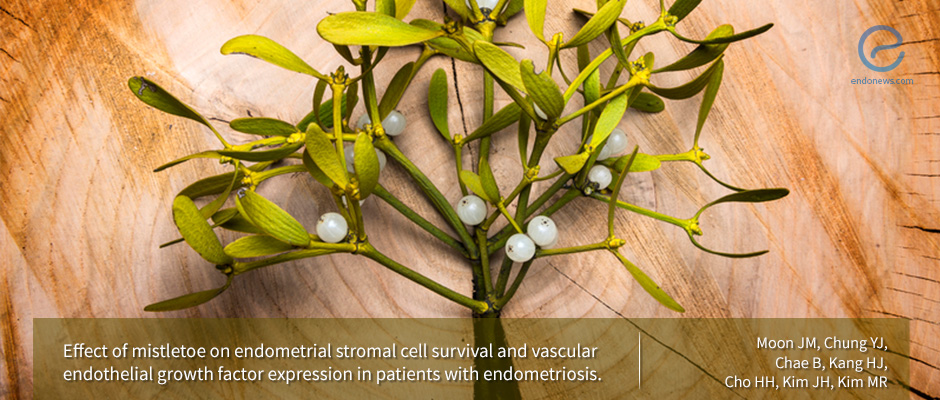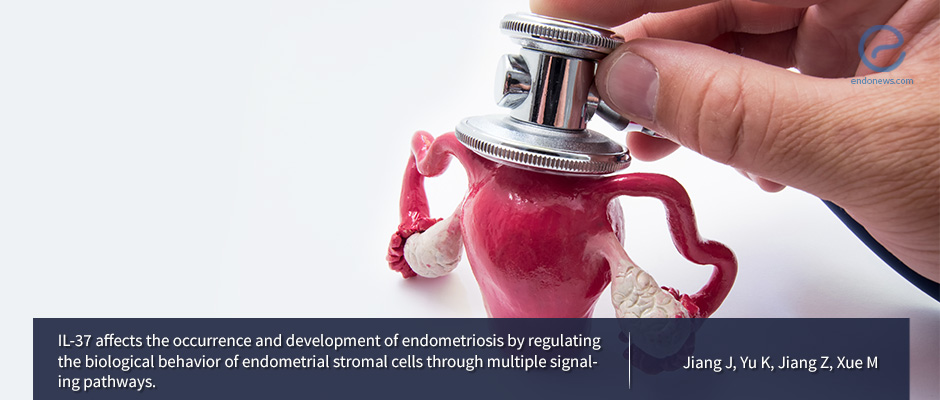Quercetin and its effects on endometriosis
Endometriosis, as a disease characterized by chronic inflammation and fibrosis, could be a potential target for quercetin, a flavonoid found in various foods and botanicals, and a known senolytic agent with many effects including antioxidant, anti-inflammatory, and immune-modulatory properties. Studies…
Key Points Lay SummaryAlterations of mitochondrial dynamics in endometriosis
Mitochondria are known as the batteries of the cell with the ATP that they produce through oxidative phosphorylation. Mitochondrial dynamics are important mechanisms for mitochondria to maintain their integrity by continuously undergoing changes. Mitochondrial fusion is the joining of two…
Key Points Lay SummaryIntravascular adenomyomatosis: an important entity to be alert
Pathologists from Stanford University, USA have recently published four novel cases of intravascular adenomyomatosis co-existing with pelvic endometriosis in a recent issue of “Human Pathology”. Intravascular leiomyomatosis is characterized by the presence of smooth muscle in venous and lymphatic spaces…
Key Points Lay SummaryWoof Woof – Bone marrow cells are coming
Bone marrow contains cells that can travel to multiple organ sites and differentiate into specific tissue cells. Bone marrow-derived stem cells have also been associated with the pathogenesis of endometriosis. These cells can affect epithelial and stromal cell regeneration both…
Key Points Lay SummaryRare lesions in the pathologic examinations of endometriosis.
Dr. Glenn McCluggage from the Department of Pathology, Belfast Health, and Social Care Trust, penned a review about selected uncommon variants of endometriosis or benign alterations that may cause difficulties of pathologic diagnosis and provided all related histopathological illustrations in…
Key Points Lay SummaryAnalogous pathways of peritoneal tumor wound healing and endometriosis.
Endometriosis, diagnosed around 10-15% of women population in their reproductive period, is a chronically progressive inflammatory disease to cause peritoneal lesions while spreading into the abdominal cavity. The pathophysiology of the adhesions between the peritoneum and pelvic organs can be…
Key Points Lay SummaryMistletoe as a Potential Candidate for Endometriosis Treatment
Endometriosis, one of the common benign gynecologic disorders, is defined as the ectopic presence of endometrial cells outside of the uterine cavity. Although the underlying mechanisms are not fully understood, the most accepted hypothesis is that endometrial cells pass through…
Key Points Lay SummaryIL-37 regulates ectopic endometrial stromal cells to prevent endometriosis
Endometriosis has been identified as a chronic inflammatory disease. It has been shown that in the plasma and peritoneal fluid, women with endometriosis exhibit aberrant numbers of immune cells and concentrations of cytokines and chemokines that promote a chronic inflammatory…
Key Points Lay SummaryRole of GATA6 in Endometriosis
Researchers discovered that a protein called GATA6 is crucial in turning endometrial stromal cells into endometriotic-like cells, which may be capable of invading surrounding tissues and growing outside the uterus. This knowledge can be used to create cell models that…
Key Points Lay SummaryS100A6 May be a Promising Target for Endometriosis Treatments
Peng et al., a group primarily from the Zhejiang University Medical College, recently published a paper in Gynecological Endocrinology titled “Upregulation of S100A6 in patients with endometriosis and its role in ectopic endometrial stromal cells.” This paper delineates a study…
Key Points Lay SummaryMenstrual Effluent Can Change the Future of Endometriosis
During Endometriosis Awareness Month, Warren et al. published a paper entitled “Analysis of menstrual effluent: diagnostic potential for endometriosis” in Molecular Medicine. This paper relies heavily on the theory of retrograde menstruation, where menstrual effluent flows into the peritoneal cavity.…
Key Points Lay SummaryAutophagy in endometriosis
Endometriosis is a common gynecologic disease affecting both fertile (5-10%) and infertile (20-50%) women, and it commonly causes chronic pelvic pain, dysmenorrhea, and infertility. Recent research found that the autophagy exerts a pro-apoptotic effect on normal human endometrial cells and…
Key Points Lay SummaryThe Role of IL-35 in the Pathogenesis of Endometriosis
The molecular mechanism that drives endometriosis remains elusive to this day. Zhang et al believe that interleukin 35 (IL-35) plays a role in the pathogenesis of the disease. Their recent publication in Reproductive Sciences titled “Upregulation of Interleukin 35 in…
Key Points Lay Summary
 By Eylül GÜN
By Eylül GÜN


 By Nasuhi Engin Aydin
By Nasuhi Engin Aydin

 By Yu Yu
By Yu Yu

 By Selma Oransay
By Selma Oransay


 By Dr. Youngran Park
By Dr. Youngran Park


 By Özge Özkaya
By Özge Özkaya

 By Kasthuri Nair
By Kasthuri Nair


